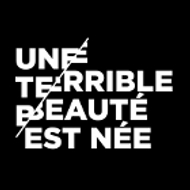11th Biennale de Lyon, A Terrible Beauty is Born
15 September – 31 December 2011
11th Biennale de Lyon, A Terrible Beauty is Born.
15 September – 31 December 2011
The organizational model of the Lyon Biennale of Contemporary Art is to create events of artistic self-renewal while establishing a stable, long-term project, bonding with its host territory. The 11th Biennale de Lyon – A Terrible Beauty is Born is curated by the Argentinean Victoria Noorthoorn, involving 70 international artists predominantly from Europe, Africa and Latin America. The programme of events take place across four venues: La Sucrière, the Fondation Bullukian, the Musée d’art contemporain de Lyon, and the T.A.S.E. factory, with two public platforms: Résonance and Veduta.
Résonance involves more than 90 art centres, private galleries, cultural institutions and artist collectives in a wide-reaching art trail giving public access to over 125 attractions – dance, performance, theatre, photography, video, installations, design, music and literature across Greater Lyon and the Rhône-Alpes region. A highlight is the Nuit Résonance, an all-night event held in central Lyon on 24 November.
Veduta is a programme of five public projects. Yona Friedman’s musée du XXIe siècle; Le Cube Blanc; kiosque; artists residencies by Ernesto Ballesteros and Jarbas Lopes; and a news and information collaboration with the television and radio magazine Télérama. The Italian word Veduta, means view or vista, specifically the concept in Renaissance painting of a window within a picture that offers an outlook onto an urban or natural landscape.
Musée du XXIe siècle: “The ‘Museum of the 21st Century’ is an invitation to the public to come and exhibit, in an open and very lightweight structure, an object that they enjoy sharing.” Yona Friedman. The Museum of the 21st Century is a randomly-constructed collection of art hosted in a temporary architectural structure designed by Yona Friedman. Visitors participate by temporarily loaning items for the exhibition. The collecting of artworks was initiated in 2000 and will end in 2100 when a catalogue of the inventory will be published.
Le Cube Blanc: a museum at the foot of the residential blocks in the Sablon-Berthaudière district, created by and for local residents, who will take turns being curators, mediators, production managers, attendants and visitors. From October to December 2011, the museum will host contemporary-art exhibitions devised by this residents’ group.
Le Kiosque: Another space for convergence and cultural planning designed as a scaffolding structure for a wasteland site close to the Biennale’s new international-exhibition venue, the T.A.S.E. factory in the eastern-Lyon suburb of Vaulx-en-Velin. The students of the École Nationale Supérieure d’Architecture de Lyon conceived a scaffolding-based ‘capability’ space, which operates like a ‘coatstand’ on which anyone can hang any form or function. The structure was built by a back-to-work team of six political refugees supervised by the Forum Réfugiés organisation. The whole construction operation is being led by the PASS Rhône-Alpes business club. This new public space hosts four events around themes inspired by ‘terrible beauty’ – 17 September 2011: “heritage as today’s music”, produced by Damien Pousset, artistic executive of the Musiques en Scène Biennale – 1 October 2011: “a day of urban culture” programmed by Bwoy Rudy, director of Revolution-R – 15 October 2011: “theatricality”, with a Samuel Beckett play staged by Claire Truche, director of Nième Compagnie, and performed by residents of Vaulx-en-Velin – 29 October 2011: “literature and poetry”. Each event day ends with the screening of a film chosen by Thierry Frémaux, director of the Institut Lumière in Lyon and artistic director of the Cannes Film Festival.
Two residencies, by Ernesto Ballesteros in Lyon’s 3rd and 9th arrondissements and by Jarbas Lopes in Feyzin will result in artworks created for the international exhibition venues, and a event held in public and co-produced with local residents.

